Dreaming of a mountainous adventure in Japan?
Which one should you aim to visit? We've detailed everything you need to know to plan your own journey to 27 of the country's most beautiful mountains.
To stay connected while exploring remote areas, an iRoamly Japan travel eSIM is the perfect companion, offering reliable coverage wherever your journey takes you.
Let's get started!
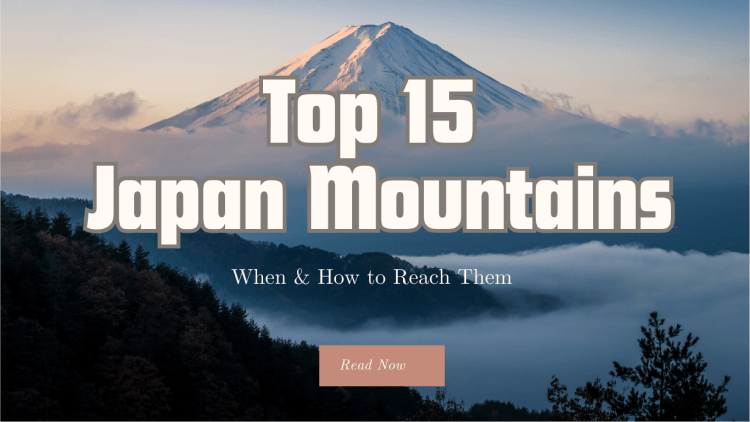
15 Stunning Mountains in Japan
Quick Guide to Japan's Must-Visit Mountains
First, here's an at-a-glance peek at what makes each mountain so unmissable. The table below will give you a quick overall idea, with full details on each to follow.
Name | Exact Location | Altitude (m) |
Mount Fuji | Shizuoka & Yamanashi | 3776 |
Mount Hotaka | Nagano | 3190 |
Mount Kita | Yamanashi | 3193 |
Mount Ainodake | Yamanashi | 3190 |
Mount Yari | Nagano | 3180 |
Mount Warusawa | Shizuoka | 3141 |
Mount Akaishi | Shizuoka | 3120 |
Mount Arakawa | Shizuoka | 3088 |
Mount Ontake | Nagano | 3067 |
Mount Kaikoma | Yamanashi | 2967 |
Mount Shiomi | Shizuoka | 3047 |
Mount Senjo | Yamanashi | 3033 |
Mount Norikura | Nagano | 3026 |
Mount Tateyama | Toyama | 3015 |
Mount Ishizuchi | Ehime | 1982 |
So now that you have an overview of the 15 key mountains in Japan, why are these mountains worth visiting?
Here's a run-down of each of Japan’s magnificent mountains, from their highest points to their most accessible trails, so you can make the most of your Japanese mountain expedition.
1. Mount Fuji
The image of Japan the world over, the awe-inspiring majesty of Mount Fuji is best appreciated from the snow-capped summit. As the highest mountain in Japan, it stands as a spiritual and cultural cornerstone of the country. Visitors climb the great peak by the thousand, drawn by its beauty and power.
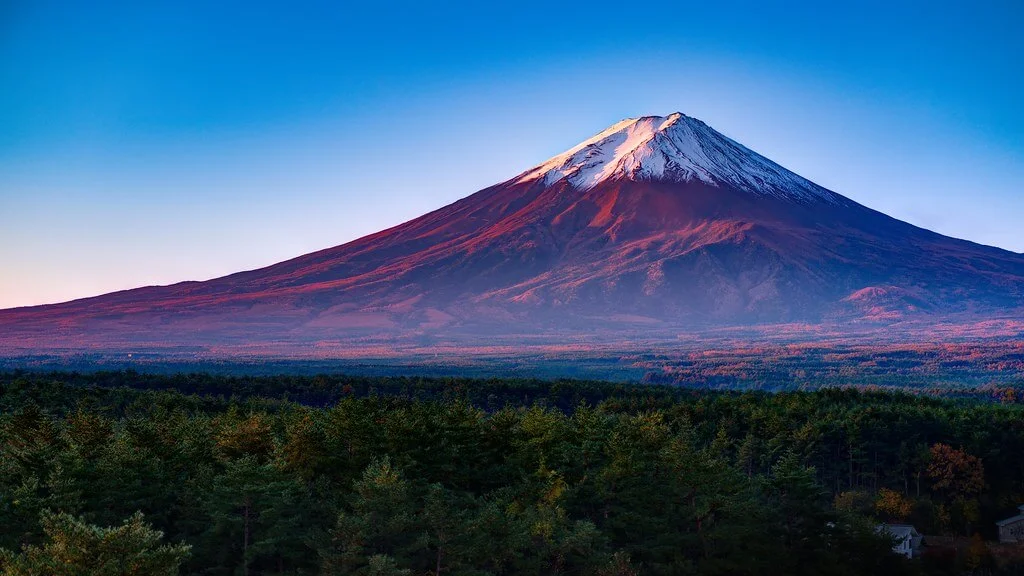
Tips: Best reached by bus to Kamikochi; 7-8 hours for ascent. Ideal in August; bring repellent for insects.
2. Mount Hotaka
If you're a bloom enthusiast as much as a keen hiker, then Mount Tsubakuro should be top of your list. Its slopes are awash with the pale pink colours of the Alpenrose. The climb to enjoy this sight is one of the most popular in the Northern Japan Alps.
Tips: With approaches from Kamikochi, 6-7 hours from the Chuo Alps ; visit in early August and pack rain gear.
3. Mount Kita
The second highest peak in Japan, Mount Kita has the kind of ascent and views that makes climbing a truly rewarding experience. The sense of achievement is almost as spectacular as the natural splendor hikers will take in along the way.
Tips: Access from Hirogawara; 8-hour hike; best climb is in late summer; bring rain gear.
4. Mount Ainodake
Prevalent golden alpine flora blooms are a hallmark for Mount Ainodake – as beautiful a challenge as you are likely to find, the hike is a splendid trek through some of the country's most beautiful natural sights. A peaceful hike that serves as a meditation on beauty and serenity.
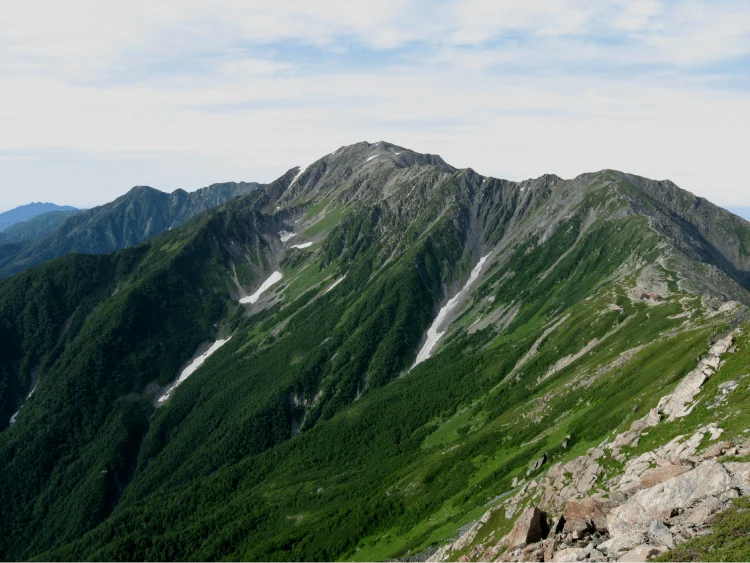
Tips: Start from Kitazawa Pass; about 7 hours to the summit. Visit in August for optimal weather.
5. Mount Yari
Its peak seeming to pierce the heavens, the sharply defined summit of Mount Yari has long stood as an icon of mountaineering ambition in the Japanese Alps, offering some of the most exhilarating ascents the range has to offer. Its distinctive silhouette makes it a popular draw for photographers and climbers alike.
Tips: Access via Shinhotaka Ropeway; 10 hours to summit. Check weather forecasts frequently.
6. Mount Warusawa
Belonging to the Akaishi Mountains, Mount Warusawa's rougher terrain and relative obscurity grant hikers a more secluded experience. Roughly hewn paths and a scarcity of other walkers lend an air of isolation that's tough to find on the more beaten trails.
Tips: Begin at Shizuoka; 5-hour ascent. Best climbed in September for stable weather.
7. Mount Akaishi
This mountain is famous for its steep slopes and the rich natural biodiversity that surrounds it. Hikers can enjoy a challenging climb coupled with the opportunity to observe unique wildlife and lush vegetation.
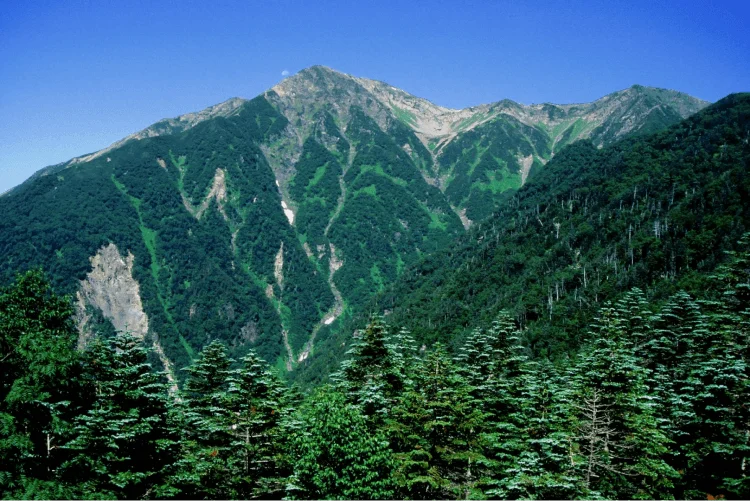
Tips: Trail starts at Minami Alps; 6 hours to reach the top. Weather can be unpredictable; pack accordingly.
8. Mount Arakawa
Quiet solitude awaits hikers on Mount Arakawa, one of the least-treaded of routes but offering up some of the Southern Alps’ best panoramas for those willing to stray off the beaten path.
Tips: Approach from the Aoki village; expect a 7-hour trek. Perfect in early autumn.
9. Mount Ontake
Where nature meets the divine, Mount Ontake offers hikers a chance to find their own spiritual path while scaling the range’s sharp volcanic cones.
Tips: Take a bus to Ontakesan; 5-hour climb. Ideal from June to October, beware of volcanic activity.
10. Mount Kaikoma
Tough, isolated, and eternally begging to be explored, Mount Kaikoma is the Southern Alps’ forgotten gem, largely ignored even when the walks are this tough. Pack supplies and settle in for a true hike into the undiscovered wilderness.
Tips: Access via Ina city; 8 hours to summit. Visit in clear weather conditions, usually around July.
11. Mount Shiomi
Mount Shiomi is a challenging peak, offering some of the best views of the central Alps. Its rugged terrain and the promise of panoramic vistas draw hikers who are looking for an adventurous and rewarding climb.
Tips: Start from Hirogawara; requires 9 hours. Best in mid-summer, prepare for strong winds.
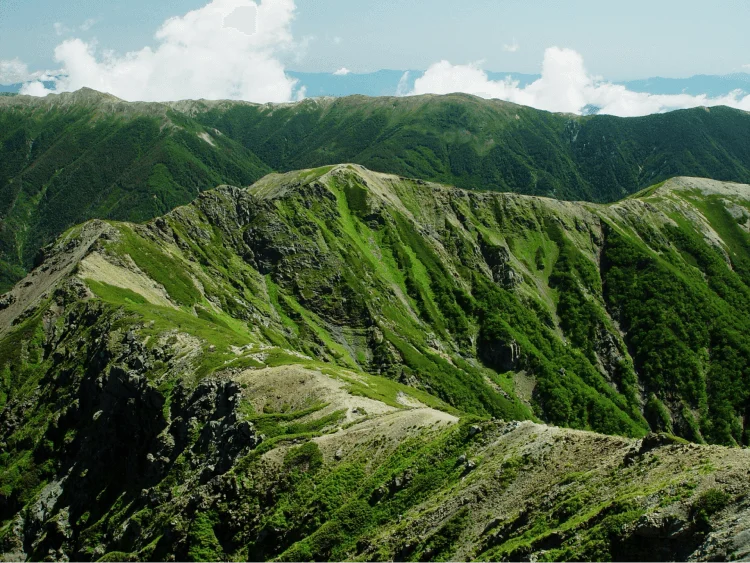
12. Mount Senjo
Mount Senjo is known for its ridges and is a great destination for photographers and hikers alike. Beautiful trails and scenery make for an enjoyable day out.
Tips: Start at the Kitazawa Pass, a 7-hour climb. Best in late summer with light gear.
13. Mount Norikura
Accessible Mt. Norikura is a great choice for families, with delightful wildflowers in summer. Gentle slopes are suitable for beginners and those seeking a more relaxed day out.
Tips: Ride the bus to Tatamidaira, a 3-hour ascent. Best in summer but beware of altitude sickness.
14. Mount Tateyama
Hikers can enjoy various trails up this mountain, a part of the Tateyama Kurobe Alpine Route, year-round. With its historical beauty, Tateyama has something for all hikers.
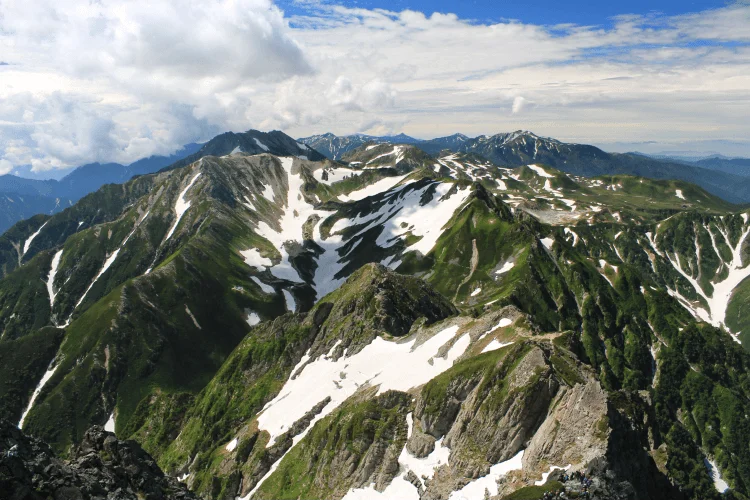
Tips: From Murodo, it takes 4 hours to reach the top. May to October is the best time to visit Japan, but be aware of sudden changes in weather.
15. Mount Ishizuchi
The highest mountain in Western Japan appeals to hikers, pilgrims, and harmony-seekers. Japan's intertwined relationship with spirituality and nature is in clear view.
Tips: Ride a cable car to Joju for a 2-hour climb. Ideal in early autumn with steep sections.
5 Famous Ski Mountains in Japan
16. Mount Hakuba
One of the most well-known and popular ski mountains in Japan, Mount Hakuba is situated in the Northern Japanese Alps and is popular due to its deep powder snow and amazing vertical drop. Boasting terrain for all abilities, it draws skiers and snowboarders from across the globe.
Tips: If you’re visiting in the high season, come early to escape the crowds and get some fresh snow on the mountains.
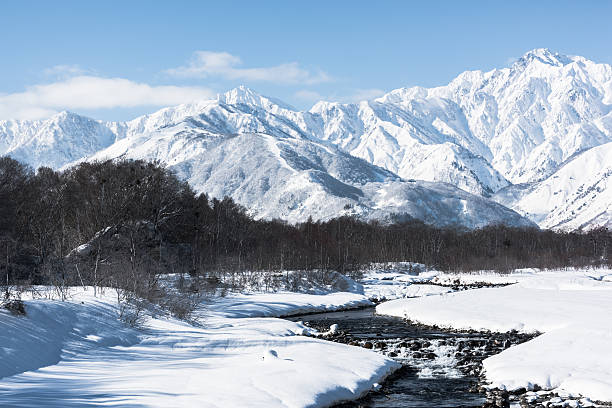
17. Mount Naeba
Mount Naeba is an iconic mountain in the Niigata Prefecture that provides picturesque scenery and great skiing.
It’s most famous for its long, wide runs and snow quality, which are some of the best in the region, attracting more advanced skiers and snowboarders.
Tips: Just check the weather before you visit. There could be heavy snowfall, but paradise for powder enthusiasts and snowboarders!
18. Mount Zao
Hone famous for its unique “snow monsters”(trees covered in snow and ice), Mount Zao is unlike any other ski resort in Japan.
The area, located in the Tohoku region is both beautiful and filled with good runs that cater to every ski level.
Tips: Try to come in the early morning in order to see the snow monsters in all their glory. They are truly magical.
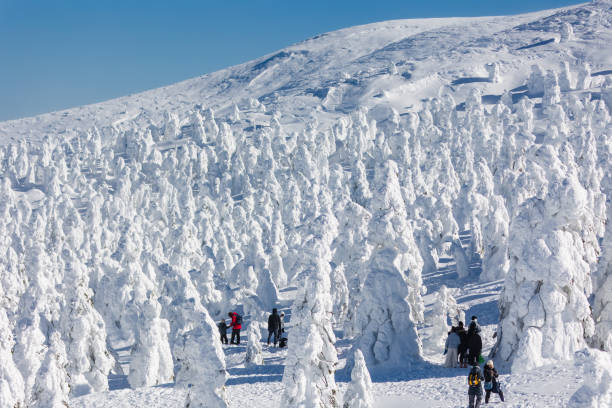
19. Mount Yotei
Known as the “Fuji of Hokkaido,” Mount Yotei is a dormant volcano that offers breathtaking vistas and ideal off-piste skiing opportunities.
Its backcountry areas are home to powder snow, making it a popular placeamong skiers seeking tougher, more isolated trails.
Tips: The backcountry routes should only be skied by very experienced skiers, as avalanches can be lethal; hire a guide.
20. Mount Shiga
With its picturesque landscape and extensive courses, Mount Shiga in the Chubu region is a popular ski destination, particularly for travelers who seek a more peaceful and tranquil skiing experience.
The mountain is not as busy as some others, creating a more subdued environment for hitting the slopes.
Tips: Mount Shiga can be harder to get to so I recommend renting a car if you want to see a lot.
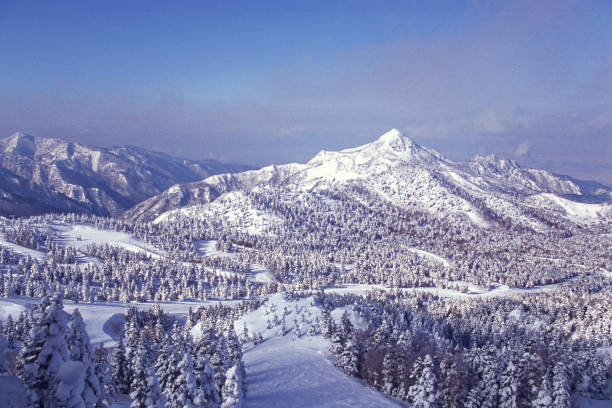
7 Other Famous Mountains in Japan
21. Mount Hakusan
Mount Hakusan, one of Japan’s “Three Holy Mountains,” is 2,702 meters and is a beautiful and spiritually sacred peak that attracts both pilgrims and hikers.
Tips: A scenic drive through alpine meadows, waterfalls, and volcanic landscapes, this is best seen late summer when the wildflowers are in bloom. Temperatures are cooler here, so pack a sweater.
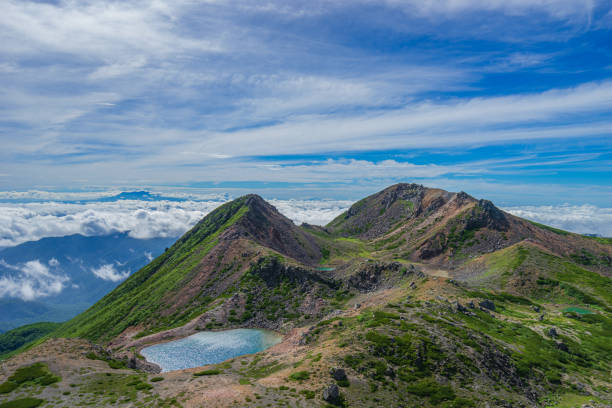
22. Mount Norikura
Mount Norikura is 3,026 meters high and one of the tallest mountains in the Northern Alps. Thanks to its clearly marked trails, it is ideal for novice hikers and offers sweeping views that won’t disappoint.
Tips: There is a bus that goes as far as the 2,702-meter point, and it only takes a few hours hike from there to reach the top. This is a popular destination for flower lovers in the summer.
23. Mount Asama
Rising 2,568 meters, Mount Asama is a live volcano in Nagano Prefecture. The steep peak here, surrounded by thick forests and valleys, is among the most active volcanoes in the country.
Tips: Watch the updates on volcanic activity before you go. Late spring and fall are the ideal times to hike. Summer becomes hot and winter gets a lot of snow.
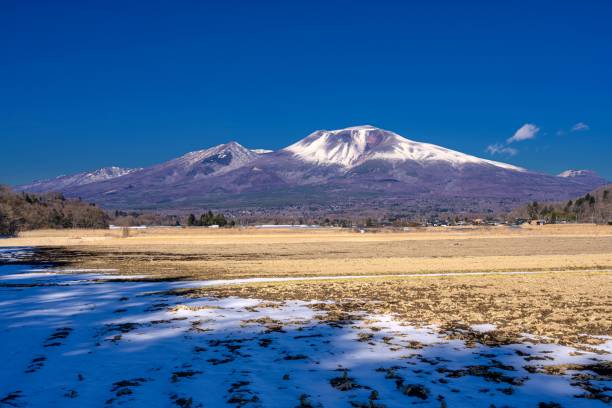
24. Mount Unzen
In the Kyushu region, Mount Unzen is 1,486 meters tall and renowned for its volcanic terrain, geothermal hot springs, and historical importance. It erupted in the 1990s and is now a spectacular landscape.
Tips: The hike up to the Caldera provides amazing panoramic views of the Shimabara Peninsula. As you roam, don’t miss Unzen Jigoku (Hell Valley), home to some boiling hot springs.
25. Mount Goryu
Located in the Northern Alps and standing at 2,814 meters, Mount Goryu is a mountain with many beautiful alpine plants offering a challenging yet fun hike. The trail was not very crowded and was really nice.
Tips: The hike itself is a moderate climb, and you can make it to the summit in around 6 hours. Best for those wanting to avoid the most popular paths.
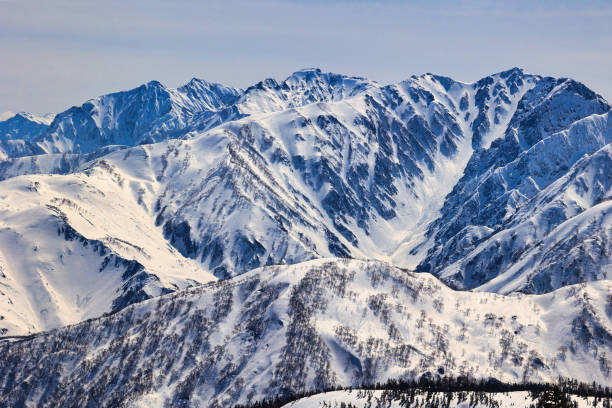
26. Mount Daisen
At 1,709 meters, Mount Daisen is Chugoku’s tallest mountain, boasting the Western Japan region’s most spectacular vistas. This combination of natural beauty and historical interest shouldn’t be missed if you’re a hiker.
Tips: The trails here are less difficult, so if you’re traveling with family this is the place to do it. It really appeals to both nature lovers and people wanting to see Daisen-ji Temple.
27. Mount Rausu
At 1,661 meters, Mount Rausu — situated on Hokkaido Island —has a rough landscape, abundance of wildlife, and is part of Japan’s 100 Famous Mountains and 100 Famous Mountains of Flowers lists.
Tips: Late spring or early summer will allow you to miss the snow and watch the wildflowers bloom.
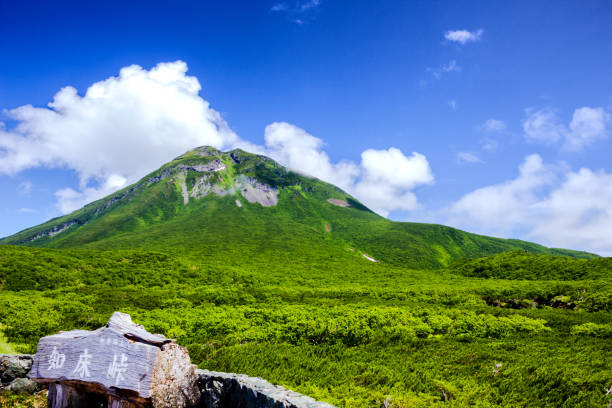
FAQ
1. What are the three famous mountains in Japan?
The “Three Holy Mountains” are the three most iconic mountains in Japan:
Mount Fuji - It’s Japan’s highest mountain (and most iconic).
Mount Tateyama - A holy mountain in the Japanese Alps.
Mount Hakusan - A city that is remarkable for both its natural beauty and religious importance.
2. Is Japan 80% mountains?
Yes, 73-80% of Japan is mountainous terrain, and mountain ranges span the entire country. This restricts the amount of flat land available for urbanization and agriculture.
3. Why is Mount Fuji so famous?
Mount Fuji is known for its almost perfectly symmetrical cone and its cultural symbolism. It’s a UNESCO World Heritage Site and a sacred mountain in Japan, featured prominently in Japanese art, literature, and religion.
Conclusion
Mountaineering in Japan is a rich, cultural, physical experience. Every mountain has its stories and scenery, waiting for you.
So, pack sensibly, prepare responsibly, and create memories that will last you a lifetime.
Happy hiking!
